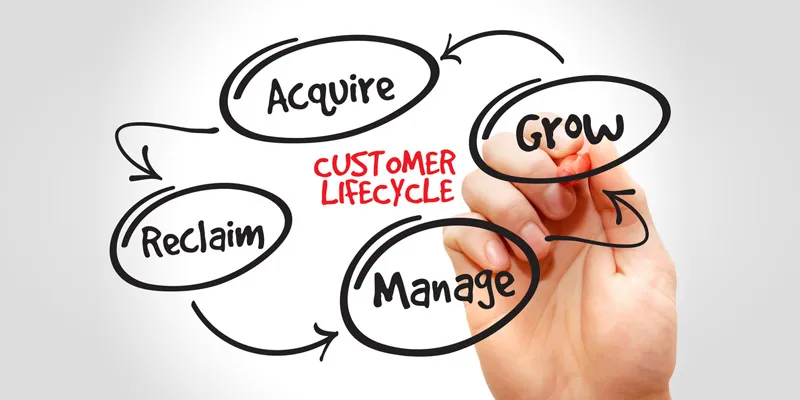Have you spoken to your non-customer lately?
The customer is King. Yes. But what about the harder-to-please Queen, who is not your customer yet?
All of us realise and value the importance of talking to customers, understanding them – their habits, their psychology, and their behavior. We want to acquire customers, please them, delight them, and retain them. So we try every trick in the book, follow every advice, and climb every mountain. And when we get attention from a few of them, voila, we are happy, and focus all our energy on doing the right thing (I hope so!) and taking the relationship to the next level. Nothing wrong there!

Image : Shutterstock
But what do you do about those who rejected you? Unless you have a 90 percent market share and non-customers represent pocket change for you, you cannot afford to ignore them. If they fall into your target segment, why are they not your customers? Do you know? Have you asked them?
Take a typical internet-based business today. You would know exactly how many visitors your website had today, which pages they checked, how much time they spent, how many clicks, who came back, how many app downloads, how many sign-ups, and every other imaginable piece of data in great detail. So you would have amazing insight into what your customers do and how they buy.
But what about those who never come to your website or app? I find that marketing and sales teams in today’s internet-based businesses are increasingly losing touch with the world outside their own venture cocoons. Technology has made it easier and cheaper to keep experimenting with targeted ads, offers, and coupon codes online.
It is strangely addictive to keep looking at social media numbers – shares, likes, comments – and feel warm enough with online user engagement; whether that translates into real sales or not is another story. It is quite likely that you will keep watching these customers/prospects and never interact with a complete non-customer ever! Should that matter?
Why is it important to talk to non-customers?
To pre-empt competition: If those similar to your customers in terms of demography, geography, and presumably with the same need, are not coming to you, they are going somewhere else to fulfill their needs. And the competition may not always be the most obvious. They may have found another disruptive solution that’s keeping them happy. You will do well to recognise the signs of the times and act with lightning speed. That can be done only when you know what your non-customers are up to!
To improve your marketing communication: Maybe someone was looking for an offering exactly like yours but never found you. That might give you an insight into where pockets of these prospective customers are, and how your communication can reach them. It might open up new channels of communication and sales for you. Maybe someone found you but did not understand what you were offering. Time to redo the communication then!
To innovate with immediate results: What if a small tweak in one of the features of your product could get you a much bigger market share? Wouldn’t that definitely be worth the effort of talking to some non-customers? Your existing customers have already accepted your offering the way it is. With their feedback and suggestions, you can modify/improve and drive up their satisfaction level, but it is unlikely that a major shift will come through that interaction. When you ask non-customers what it is that will make them buy, their answer might actually set you on your way to discover a path-breaking innovation!
To cope with change: Change is the only constant. Your customers are not a static point. They are a part of an ever-evolving graph line that can go either way. You can’t afford to be complacent. Business cycles and product lifecycles are part of the entrepreneurial journey. When your customer numbers suddenly start traveling south, it pays if you know the insides of the growing non-customer pool already! This insider knowledge can help you come up with a quick solution to stem the breach and recoup quickly.
To always be the top-of-the-mind first alternative: As a customer, when I look for alternatives to something I am already using, but don’t like any more, where am I likely to turn? Most likely to another brand/company/solution I have already heard of and interacted with. So as a business, when you have goodwill and brand recognition even in the pool of your non-customers, you will likely be their first choice when they look for an alternative. You wouldn’t want to be last in queue or a complete stranger at that time!
So how exactly does one even get to know these non-customers?
Online forums, review sites, social media: Your non-customers are talking about the solutions they have found in these forums, review sites, on their Facebook pages, Twitter streams, recommendations, rankings, and comments. Read these carefully and analyse.
Offline activities: Participate or at least attend exhibitions, trade shows, and events relevant to your industry/product. You will meet many new people there who may never visit you online. Some of them may not be very vocal anywhere online. Unless you interact and meet them offline, you will never know what they are looking for!
Learn to converse and listen: It will not help to be a pushy salesperson while trying to understand non-customers. Don’t try to sell or convince. Just listen, empathise, and understand what they are saying/thinking/feeling. It is only through such active listening that you will know why someone is not your customer.
Watching your customers and sales statistics is great, but let us not become myopic in the process. Let us not forget to occasionally look up from those graphs to set your sights on wider horizons!
(Disclaimer: The views and opinions expressed in this article are those of the author and do not necessarily reflect the views of YourStory.)







